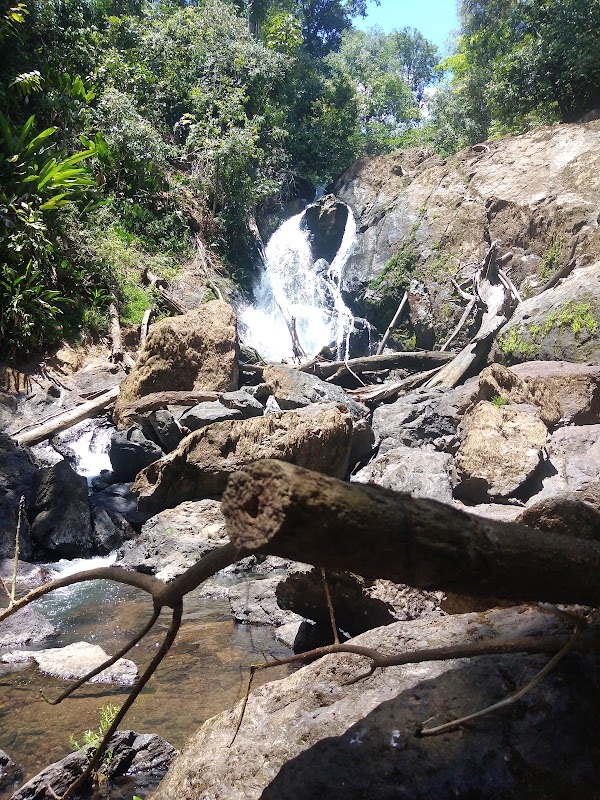Best Waterfall and Wildlife Trails Near Corcovado National Park: Untamed Adventures in Southern Costa Rica
Explore the best waterfalls and wildlife trails just outside Corcovado National Park, where Southern Costa Rica’s raw rainforest challenges and rewards hikers alike. From the rushing currents of San Pedrillo to the rich wildlife of Sirena, this guide balances adventure thrill with practical preparation.
Start Early for Wildlife Encounters
Wildlife is most active in the early morning hours. Plan to begin hikes around sunrise to maximize sightings and avoid afternoon heat.
Wear Waterproof Hiking Boots
Trails can be muddy and slippery after rain, with river crossings that demand solid footing. Invest in waterproof boots with good grip.
Carry Ample Water and Snacks
Humidity and heat increase fluid loss. Bring at least 2 liters of water per person and compact, high-energy snacks for sustained stamina.
Use Eco-Friendly Insect Repellent
Mosquitoes and other insects are plentiful; using biodegradable repellent protects both you and the environment.
Best Waterfall and Wildlife Trails Near Corcovado National Park: Untamed Adventures in Southern Costa Rica
Southern Costa Rica’s Corcovado National Park stands as a wilderness demanding attention—not for those seeking an easy stroll, but for adventurers ready to meet nature on uncompromising terms. Just beyond Corcovado’s edges, waterfalls and wildlife trails offer a raw taste of the wild, where rivers challenge your steps and the forest watches silently, alive with motion.
Start with the San Pedrillo Waterfall Trail. This 5-kilometer out-and-back path rises roughly 200 meters through dense rainforest, where roots anchor slippery earth and the air thickens with humidity. Waterfalls rush ahead, daring you closer with their thunderous voices. Along the trail, keep eyes sharp for coatis darting between trees and toucans calling overhead. The terrain is uneven but well-marked, suitable for hikers with moderate fitness.
For a longer trek, the Sirena Wildlife Loop covers about 11 kilometers with a 350-meter elevation gain through diverse habitats. The trail passes streams that push forward with relentless energy and shaded clearings where howler monkeys establish their daily territories. Bring sturdy boots—the ground varies from muddy to rocky—and prepare for unexpected river crossings depending on recent rainfall. This route offers some of the most potent wildlife sightings near Corcovado, including tapirs and scarlet macaws.
If you want a shorter option with a high impact, the Matuda Trail is 3.5 kilometers round trip, climbing gently 150 meters. This track leads to the Matuda waterfall, an inviting plunge pool where the forest’s pulse slows. The path favors wet forest flora, and on mornings drenched in mist, the leaves drip as if alive, touching you with nature’s own breath.
Timing is key: mornings bring cooler air and more active wildlife, while afternoons can turn sticky and bring sudden showers. Hydrate often—small waterfalls nearby allow quick refreshes, but carry at least 2 liters per person. Bring insect repellent and wear long sleeves; the jungle’s tiny inhabitants are as fierce as its towering giants.
Each trail demands respect—not conquest. Corcovado’s surroundings move with deliberate power, inviting you to adapt your pace, watch closely, and listen. Whether it’s the bold splash of waterfalls or the sudden rustle in the underbrush, every step is an engagement with a world fiercely itself, equally willing to reveal or hold its secrets.
Nearby Trips
All Adventures
Boat Charters
Water Activities
Adventures near Puerto Jiménez
Discover the unique and memorable adventures that make Puerto Jiménez special.
Frequently Asked Questions
Are guided tours necessary for hiking these trails?
While some trails are marked, guided tours provide valuable insights and improve safety, especially in remote areas with complex wildlife and terrain.
What wildlife is commonly seen along the trails near Corcovado?
Expect to see howler monkeys, coatis, toucans, scarlet macaws, and if lucky, tapirs or even jaguars, though the latter is elusive.
How should I prepare for river crossings on these hikes?
Assess water levels carefully; use trekking poles for balance. Avoid crossing after heavy rains when currents strengthen. Waterproof footwear is highly recommended.
Are the trails suitable for children or casual hikers?
Some shorter trails like Matuda are manageable for families with older children, but others require moderate endurance and careful footing.
What environmental considerations should hikers keep in mind?
Stay on marked paths to protect sensitive ecosystems, pack out all trash, and avoid disturbing wildlife to preserve the park’s natural balance.
Is there cell service or emergency help available on these trails?
Cell service is sporadic or absent on many trails. Carry a first aid kit and inform a trusted contact of your plans before heading out.
Recommended Gear
Waterproof Hiking Boots
Protect feet from wet, muddy conditions and unstable surfaces commonly encountered on Corcovado’s waterfall and wildlife trails.
Lightweight Rain Jacket
Essential for sudden rainstorms typical of the wet season; keeps you dry while allowing breathability.
Reusable Water Bottle with Filter
Stay hydrated with clean water; some natural sources may need filtering before drinking.
Insect Repellent with Natural Ingredients
Repels mosquitoes and biting insects without harming sensitive jungle ecosystems.
Local Insights
Hidden Gems
- "Mirador Dos Brazos, a lesser-known viewpoint offering panoramic coastal views reachable after Sirena trail"
- "La Lleona Trail junction, a serene spot with frequent jaguar prints found by experienced trackers"
Wildlife
- "The bright blue morpho butterflies flitting along shaded paths"
- "Olive Ridley turtles nesting on nearby beaches during nesting season"
History
"Corcovado was once home to indigenous peoples whose connection with the land informs modern conservation efforts. The park’s creation reflects a history of environmental activism."

